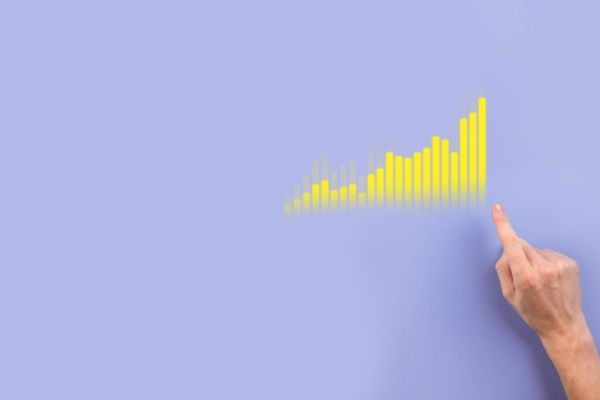Insights
INSIGHTS
All Topics
All you need to know about Google Analytics 4
30 Jun 2023by Paul Rubens
We look at the latest changes to Google Analytics 4 and how they might impact charities
Google Analytics 4 was introduced a couple of years ago, but your charity, like many others, may still be using the older Universal Analytics on its website.
If that’s the case, then your charity is missing out on some valuable features which could help you maximise the effectiveness of your marketing and fundraising campaigns.
So let’s take a look at what’s changed with Google Analytics 4.
Focus on users and events in Google Analytics 4
Perhaps the biggest difference is that Google Analytics 4 has been built from the ground up to look at users and events. That’s in stark contrast to what’s gone before, where sessions where the focus of attention.
As an events-based system, Google Analytics 4 counts each user interaction as a standalone event, rather than grouping user interactions into a specific time frame or session.
Events include user interactions with a website or app such as views or buttons clicks. What’s new, and particularly convenient, is that events don’t require the addition of custom code to the tracking code embedded in the site. Some events are even measured by default.
Among the benefits of this approach are easier and more accurate cross-platform analysis and pathing analysis, and the ability to predict user behaviour more accurately – especially when some types of data is difficult to collect.
To make more accurate behavioural predictions, Google Analytics 4 also artificial intelligence (AI) to fill in gaps in data caused by cookie-consent rules, or JavaScript blocking.
This is particularly helpful given that privacy laws such as GDPR and the American CCPA often make the collection of certain types of data difficult.
Google Analytics 4 can use AI and machine learning models to effectively “fill out” data for web traffic and user behaviour in the cases where it is not available.
How to get started with Google Analytics 4
If you want to start using Google Analytics 4 , there are three ways to go about it:
- Set up Analytics data collection for the first time. Do this if you’re new to Analytics and ready to collect data for your charity’s website and/or app
- Add Google Analytics 4 to a site with Universal Analytics. The Google Analytics 4 Setup Assistant will add a Google Analytics 4 property alongside your existing Universal Analytics property. Your Universal Analytics property will continue to collect data. You can access both using the property selector in the Admin area
- Add Google Analytics 4 to a website builder platform or content management system (CMS). Do this if your charity uses a CMS-hosted content management system, such as a website created using Wix, WordPress, Drupal, Squarespace, or GoDaddy
Looking at reports
Google Analytics 4 changes the way you look at reports. Gone is the long and exhaustive list of predefined reports, and in its place are overview reports in summary cards.
You can drill down and find out more information about any summary card by clicking on its scorecard. Here are some of the most useful ones:
Realtime reports
These provide a quick way for you to get a handle on events that have happened in the last thirty minutes. Why is that useful? There are a number of scenarios when this might be the case, including checking that tracking code is working correctly, or seeing the effects of a new fundraising campaign from the moment that it is launched.
User snapshots
These allow you to see a collection of data from a single random user. The information provided includes data about the random user’s device and location, and their engagement with your charity’s website (or app) through the events that they trigger.
Lifecycle reporting
Google Analytics 4 offers a group of reports called the Life cycle collection. This is designed to help you understand user activity from acquisition to conversion as they go to your charity website and ultimately make a donation or a purchase. These reports include:
- Acquisition: Focusing on new and returning users and the method of acquisition (e.g. medium, source, campaign)
- Engagement: Showing user activity by event count, the amount of time users engage with your charity website or app, and the number of times users return to your website or app
- Monetisation: Helping you understand the revenue you generate through donations, ecommerce purchases, in-app purchases, subscriptions, and mobile ads
- Retention: Covering how effectively you’re able to turn new users into returning users and the percentage of users who keep returning to your charity’s website or app
Data Analysis
You can use Google Analytics 4 to explore your data using data visualisation in more ways than was possible previously using Universal Analytics. Here are some useful analyses you may want to carry out:
Anomaly detection
One particularly powerful feature of Google Analytics 4 is the ability to carry out anomaly detection. This highlights behaviours and data points which are unusual or unexpected.
Investigating the causes of these anomalies can provide unexpected insights, or simply flag that something has been configured incorrectly or is not working as it should.
Cohort analysis
This allows you to take a detailed look at a cohort – users with common characteristics, such as supporters of your charity who all previously donated in a specific month or year, or who are all repeat donors.
This can be useful for analysing donor behaviour – for example seeing how long it takes people who have donated to your charity in the previous year to donate again in response to a specific fundraising campaign.
User lifetime
This analysis report can be extremely valuable to charity fundraisers because it provides insight into the sources which are providing supporters with the highest lifetime donation revenue – rather than just donations from a particular month or year.
This can help you identify the fundraising campaigns which are helping your charity to acquire the most valuable donors, with the highest donation probability, and the lowest churn probability. To do this it uses Google Analytics 4’s prediction models.
Universal Analytics end of life
It’s worth mentioning one final and compelling reason that your charity should consider moving to Google Analytics 4, if it hasn’t already done so. On July 1 2023, Google will stop processing Universal Analytics data as GA4 becomes the standard.
By making a move to Google Analytics 4 now in parallel with Universal Analytics, you can ensure that your charity is well placed and ready for when Universal Analytics begins to be phased out in a year’s time.
More on this topic
Recommended Products
Featured Products
15 Jan 2025by kirsty marrins
AI and the future of service delivery
03 Jan 2025by Joe Lepper
Top digital tools to help charities measure their impact
Our Events
Charity Digital Academy
Our courses aim, in just three hours, to enhance soft skills and hard skills, boost your knowledge of finance and artificial intelligence, and supercharge your digital capabilities. Check out some of the incredible options by clicking here.





















